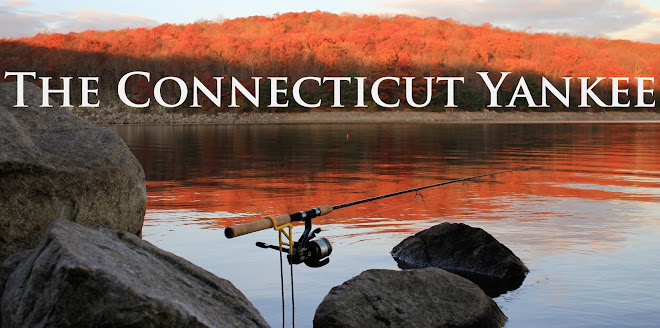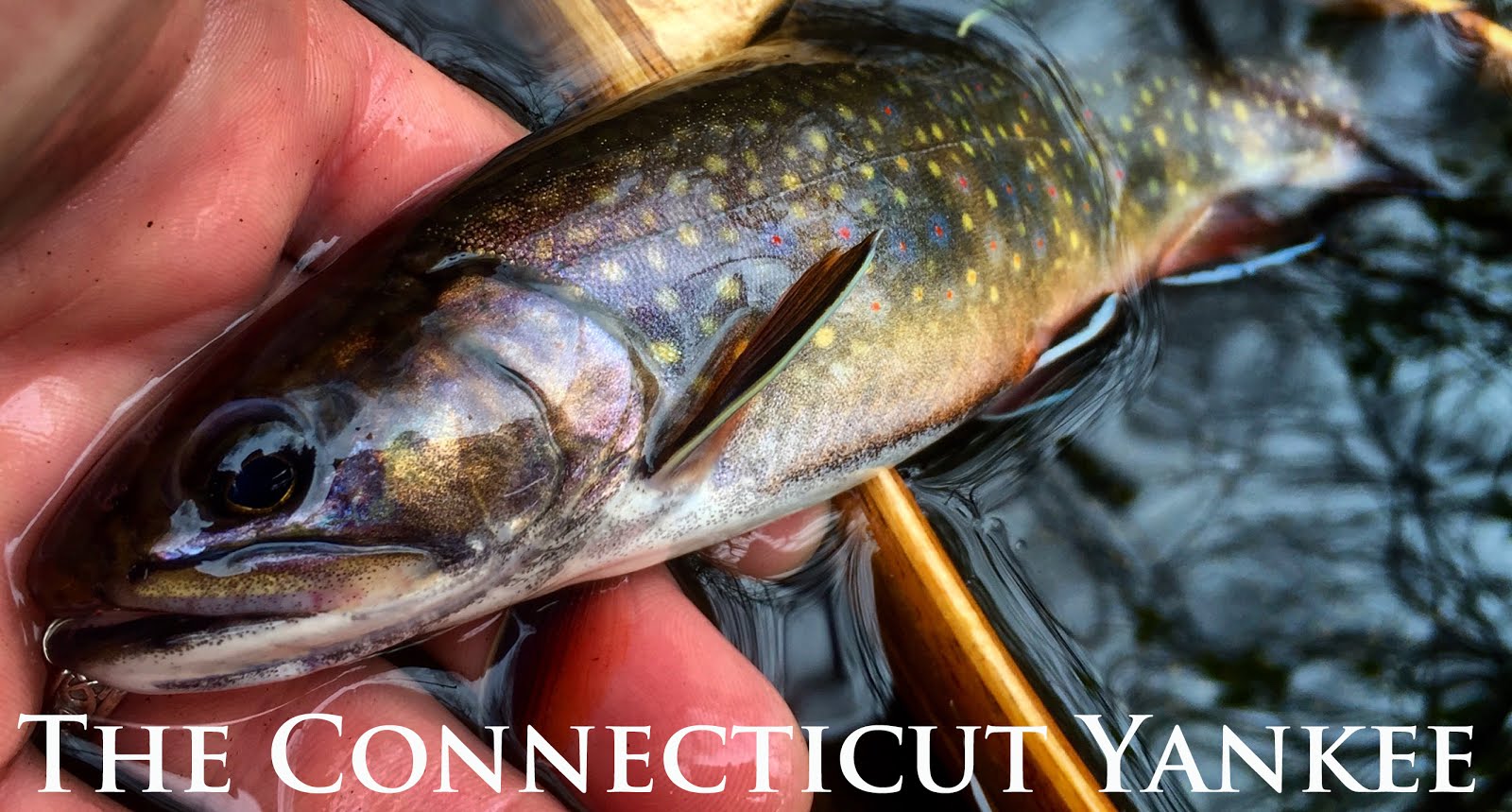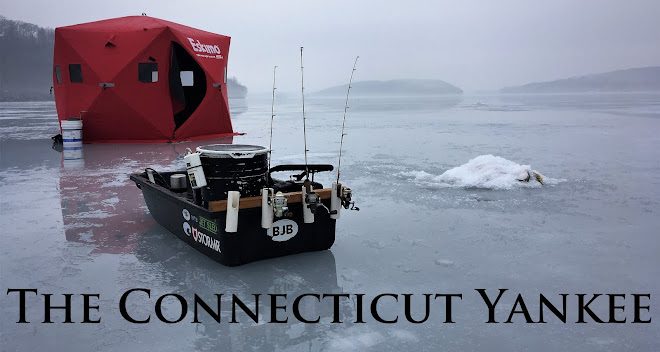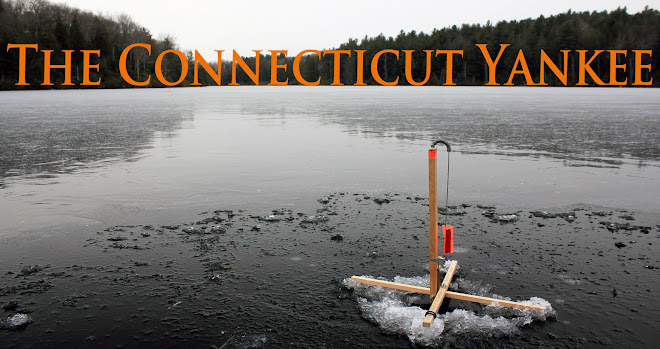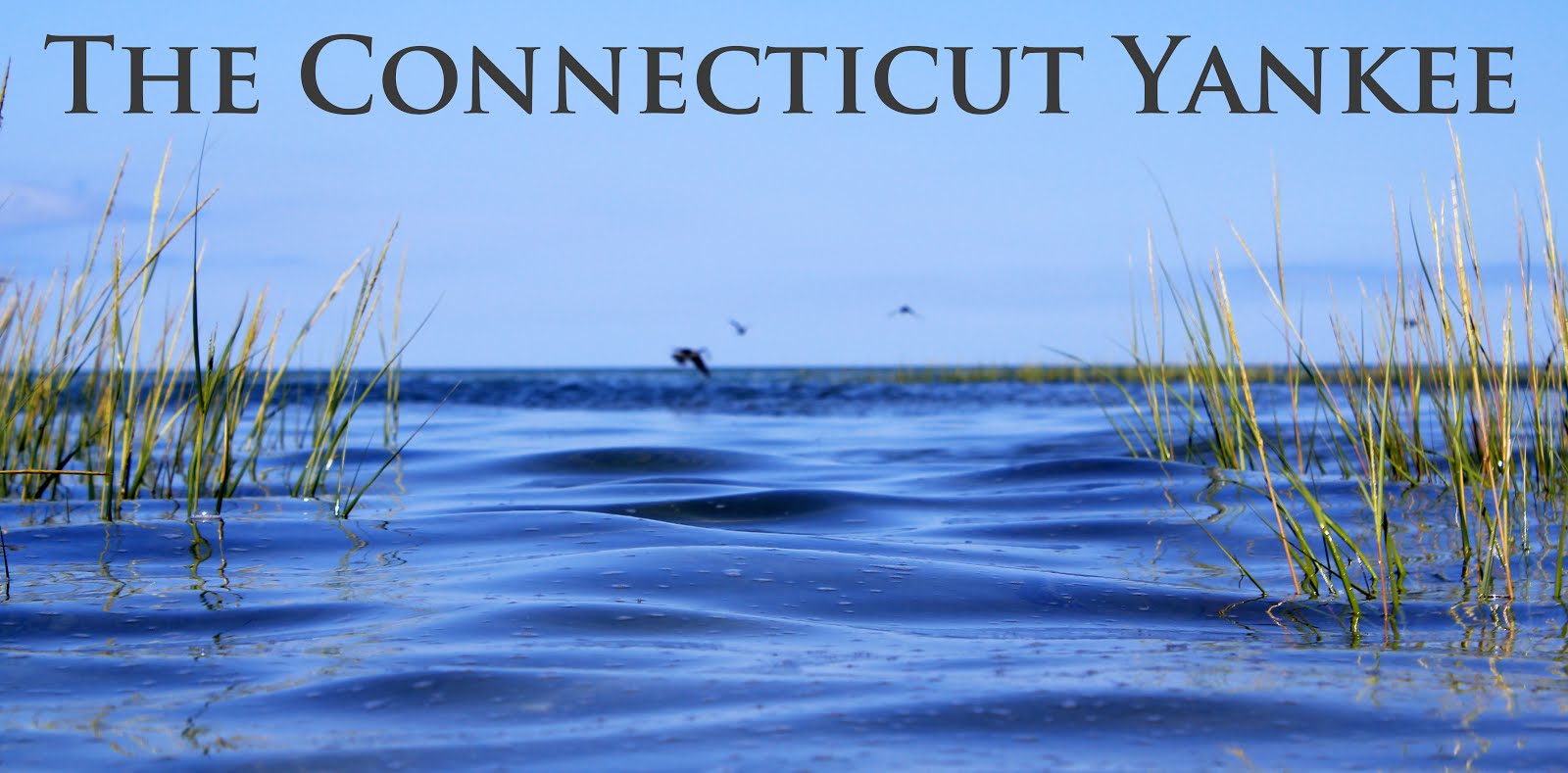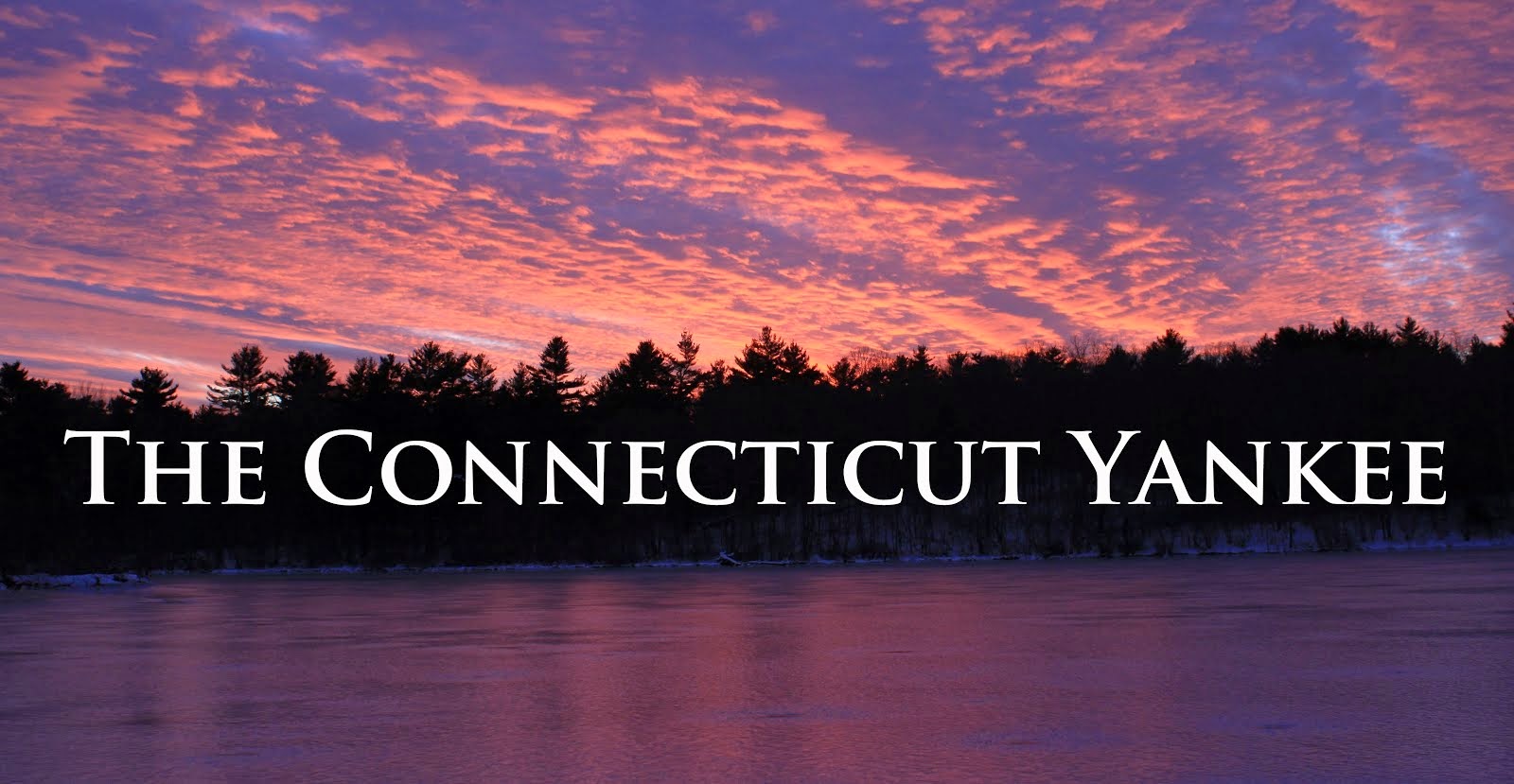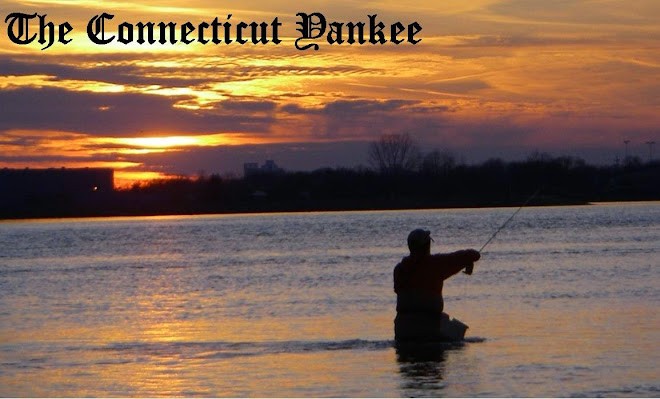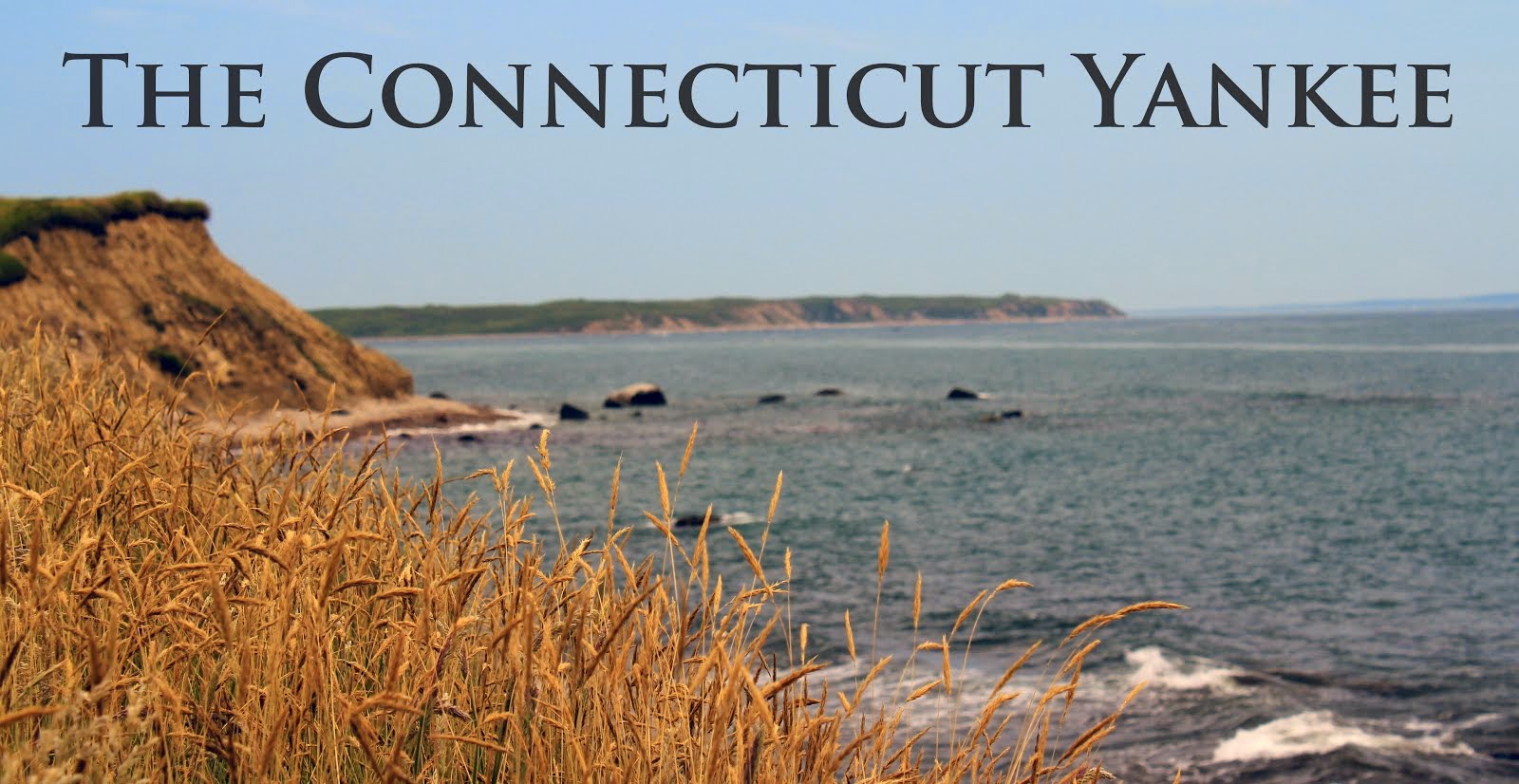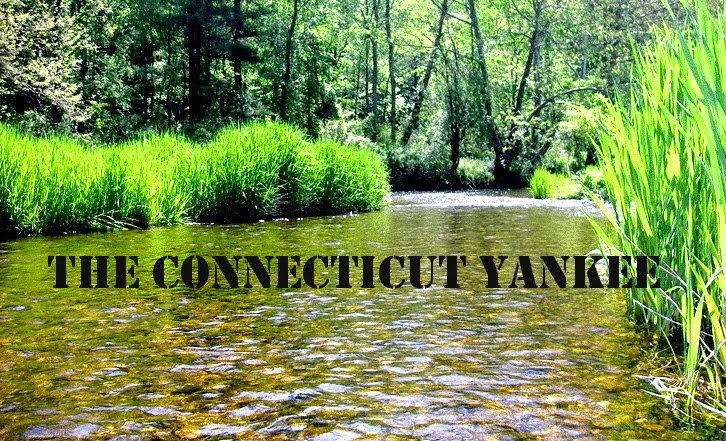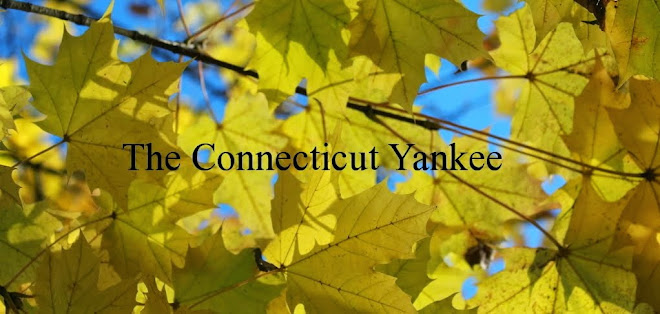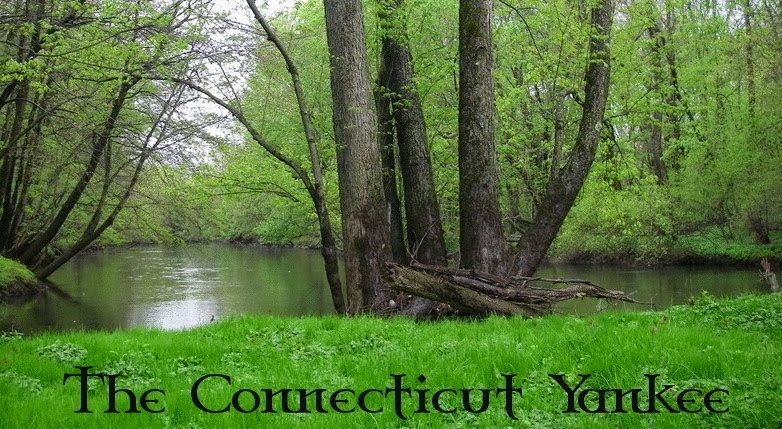It was the first Saturday of the fall blackfish season in Connecticut waters and three weekend warriors brimming with optimism pulled out of Milford harbor and veered east. The forecast called for a wet morning—not a driving rain, but steady showers throughout. With winds from the north to start, at least the ten minute ride out to the breakwalls was calm.
The first thing witnessed while approaching the tog grounds was a peregrine falcon perched on a slab of granite and another dive-bombing it. Those are badass birds that I don't see often, so it was taken as a good omen. After shaking the rust off in the anchoring department, we settled in with our stern tight to the outer wall in 15 feet of water. The rain didn't keep many at port; there was a long line of at least two dozen boats, all a respectable distance apart—far enough so you couldn't hear conversations, yet close enough so you could keep an eye on catch rates. Further proof this part of the breakwall was popular was the sheer amount of cut sections of rope tied to makeshift lumber anchors that were never retrieved—a common yet ugly side of the sport.
We were outfitted with light conventional and spinning combos rigged with braided line, long leaders, and blackfish jigs. Vertical jigging for tog in shallow water is the only way I have ever fished for them. It's easy to detect hits and when you do connect, the battles are a ton of fun. Blackfish have incredible strength and bulldog immediately back to their rocky lairs when hooked. It pays to put the screws to them right away in order to pull them from structure, yet losing fish and tackle is inevitable. An unmistakable trait of tautog is that they are creatures of habitat; they're always glued to a craggy bottom and a couple feet in any direction, even a matter of inches, could make all the difference between finding fish and striking out. Water temperature also plays a critical role in knowing what depth to find blackfish, but I don't pretend to have that all figured out.
The first thing witnessed while approaching the tog grounds was a peregrine falcon perched on a slab of granite and another dive-bombing it. Those are badass birds that I don't see often, so it was taken as a good omen. After shaking the rust off in the anchoring department, we settled in with our stern tight to the outer wall in 15 feet of water. The rain didn't keep many at port; there was a long line of at least two dozen boats, all a respectable distance apart—far enough so you couldn't hear conversations, yet close enough so you could keep an eye on catch rates. Further proof this part of the breakwall was popular was the sheer amount of cut sections of rope tied to makeshift lumber anchors that were never retrieved—a common yet ugly side of the sport.
We were outfitted with light conventional and spinning combos rigged with braided line, long leaders, and blackfish jigs. Vertical jigging for tog in shallow water is the only way I have ever fished for them. It's easy to detect hits and when you do connect, the battles are a ton of fun. Blackfish have incredible strength and bulldog immediately back to their rocky lairs when hooked. It pays to put the screws to them right away in order to pull them from structure, yet losing fish and tackle is inevitable. An unmistakable trait of tautog is that they are creatures of habitat; they're always glued to a craggy bottom and a couple feet in any direction, even a matter of inches, could make all the difference between finding fish and striking out. Water temperature also plays a critical role in knowing what depth to find blackfish, but I don't pretend to have that all figured out.
 One thing I do know is that blackfish rifle through crabs. It will never cease to amaze me at just how well they can steal bait off a hook. There's always a fair share of swings and misses, but when you get a solid connection it's one of the coolest feelings in fishing. Mike bought a gross of Asian crabs and a box of greenies for good measure, so running out of bait wasn't a concern. There was fast action from the very first drop and if water clarity allowed for it, it would have been cool sending down my GoPro to witness the scene. We were anchored over a pile of fish; many of them smaller sized tog with some black sea bass and ugly oyster toadfish mixed in. It took a while to weed through the shorts and bycatch, but thankfully we found enough keepers to bring home for the table. A few brutes lost in the rocks we'll never know about, but that's part of what keeps it interesting.
One thing I do know is that blackfish rifle through crabs. It will never cease to amaze me at just how well they can steal bait off a hook. There's always a fair share of swings and misses, but when you get a solid connection it's one of the coolest feelings in fishing. Mike bought a gross of Asian crabs and a box of greenies for good measure, so running out of bait wasn't a concern. There was fast action from the very first drop and if water clarity allowed for it, it would have been cool sending down my GoPro to witness the scene. We were anchored over a pile of fish; many of them smaller sized tog with some black sea bass and ugly oyster toadfish mixed in. It took a while to weed through the shorts and bycatch, but thankfully we found enough keepers to bring home for the table. A few brutes lost in the rocks we'll never know about, but that's part of what keeps it interesting.As the morning wore on, the skies cleared and the wind ramped up. The action remained consistent, but I just ran out of time. There was a false sense of calm being tucked behind the breakwall, but the ride back to the harbor was much sportier in comparison to our morning commute. We were back on the dock by noon with some tasty fillets to show for it. Mike and Dan went home to cook their share up for lunch and I saved mine for a family dinner later that night. Both households prepared fried fish sandwiches that turned out amazing. From Long Island Sound to a Griswold cast iron pan in the same day is my kind of fresh! It's hard to mess up a blackfish meal—their white meat is delectable and anything but fishy tasting. And it's not a fish that my family eats often, so it was enjoyable to share with them. That very well could be my first and last blackfish outing of the year, but it sure was a memorable one.
Editor's note: Here's a quick edit from the GoPro footage in the rain. Enjoy!




















































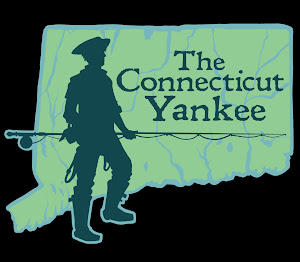









.jpg)

